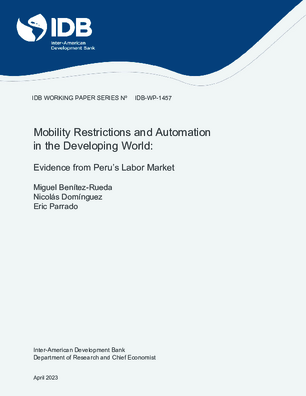Mobility Restrictions and Automation in the Developing World: Evidence from Peru's Labor Market
Date
Apr 2023
Mobility restrictions have the potential to accelerate automation. Using difference-in-differences and triple-differences empirical strategies, and leveraging cross-industry variation in mobility restrictions and within-industry variations in automation risk, this paper estimates the impact of pandemic-related restrictions on automation in Peru. Our results indicate that mobility restrictions significantly decreased employment rates (22.5%) and hourly wages (74.1%) for workers in highly automatable jobs up to 18 months after the shock. These effects were particularly pronounced among women, small and medium-sized firms, informal workers, and individuals with low and medium skill levels working in manufacturing, construction, and services. Evidence suggests that occupational mobility from high-risk to low-risk jobs drove recovery afterwards.




